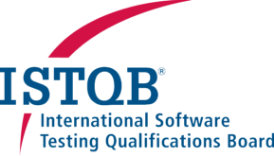Certified Tester Security Tester (CT-SEC)
Overview
The ISTQB® Security Tester (CT-SEC) certification focuses on planning, performing, and evaluating security tests from multiple perspectives including risk, requirements, vulnerability, and human factors. It also covers security testing tools and standards.
Audience
The Security Tester certification is aimed at people who have some experience in security testing and wish to further develop their expertise in security testing.
To gain this certification, candidates must hold the Certified Tester Foundation Level certificate and not less than 3 (three) years of relevant academic, practical, or consulting experience. Please contact an ISTQB® Member Board or Exam Provider to determine the specific practical experience criteria.
Content
ISTQB® Certified Tester – Security Tester (CT-SEC)
The Basis of Security Testing
Security Risk
Information
Security Policies and Procedures
Security Auditing and Its Role in Security Testing
Security Testing Purpose, Goals and Strategies
Introduction
The Purpose of Security Testing
The
Organizational
Context
Security Testing
Objectives
The Scope and
Coverage of Security Testing Objectives
Security Testing
Approaches
Improving the Security Testing
Practices
Security Testing
Processes
Security Test
Process
Definition
Security Test
Planning
Security Test
Design
Security Test
Execution
Security Test
Evaluation
Security Test
Maintenance
Security Testing Throughout the Software Lifecycle
The Role of Security Testing in a Software Lifecycle
The Role of
Security Testing in Requirements
The Role of
Security Testing in Design
The Role of
Security Testing in Implementation
Activities
The Role of Security Testing in System and Acceptance Test
Activities
The Role of Security Testing in Maintenance
Testing Security
Mechanisms
System
Hardening
Authentication and Authorization
Encryption
Firewalls and Network Zones
Intrusion Detection
Malware Scanning
Data
Obfuscation
Training
Human Factors in Security Testing
Understanding
the Attackers
Social
Engineering
Security
Awareness
Security Test
Evaluation and Reporting
Security Test
Evaluation
Security Test
Reporting
Security Testing
Tools
Types and Purposes of
Security Testing
Tools
Tool Selection
Standards and Industry Trends
Understanding
Security Testing
Standards
Applying Security
Standards
Industry Trends
Exam Structure
- No. of Questions: 45
- Passing Score: 52
- Total Points: 80
- Exam Length (mins): 120 (+25% Non-Native Language)
Business Outcomes
Advanced Level testers who have passed the “Advanced Security Tester” module exam should be able to accomplish the following Business Objectives:
- Plan, perform and evaluate security tests from a variety of perspectives – policy-based, risk-based, standards-based, requirements-based and vulnerability-based.
- Align security test activities with project lifecycle activities.
- Analyze the effective use of risk assessment techniques in a given situation to identify current and future security threats and assess their severity levels.
- Evaluate the existing security test suite and identify any additional security tests.
- Analyze a given set of security policies and procedures, along with security test results, to determine effectiveness.
- For a given project scenario, identify security test objectives based on functionality, technology attributes and known vulnerabilities.
- Analyze a given situation and determine which security testing approaches are most likely to succeed in that situation.
- Identify areas where additional or enhanced security testing may be needed.
- Evaluate effectiveness of security mechanisms.
- Help the organization build information security awareness.
- Demonstrate the attacker mentality by discovering key information about a target, performing actions on a test application in a protected environment that a malicious person would perform, and understand how evidence of the attack could be deleted.
- Analyze a given interim security test status report to determine the level of accuracy, understandability, and stakeholder appropriateness.
- Analyze and document security test needs to be addressed by one or more tools.
- Analyze and select candidate security test tools for a given tool search based on specified needs.
- Understand the benefits of using security testing standards and where to find them.
More Information
Training is available from Accredited Training Providers (classroom, virtual, and e-learning). We highly recommend attending accredited training as it ensures that an ISTQB® Member Board has assessed the materials for relevance and consistency against the syllabus.
Self-study, using the syllabus and recommended reading material, is also an option when preparing for the exam.
Holders of this certification may choose to proceed to other Core, Agile, or Specialist stream certifications.


